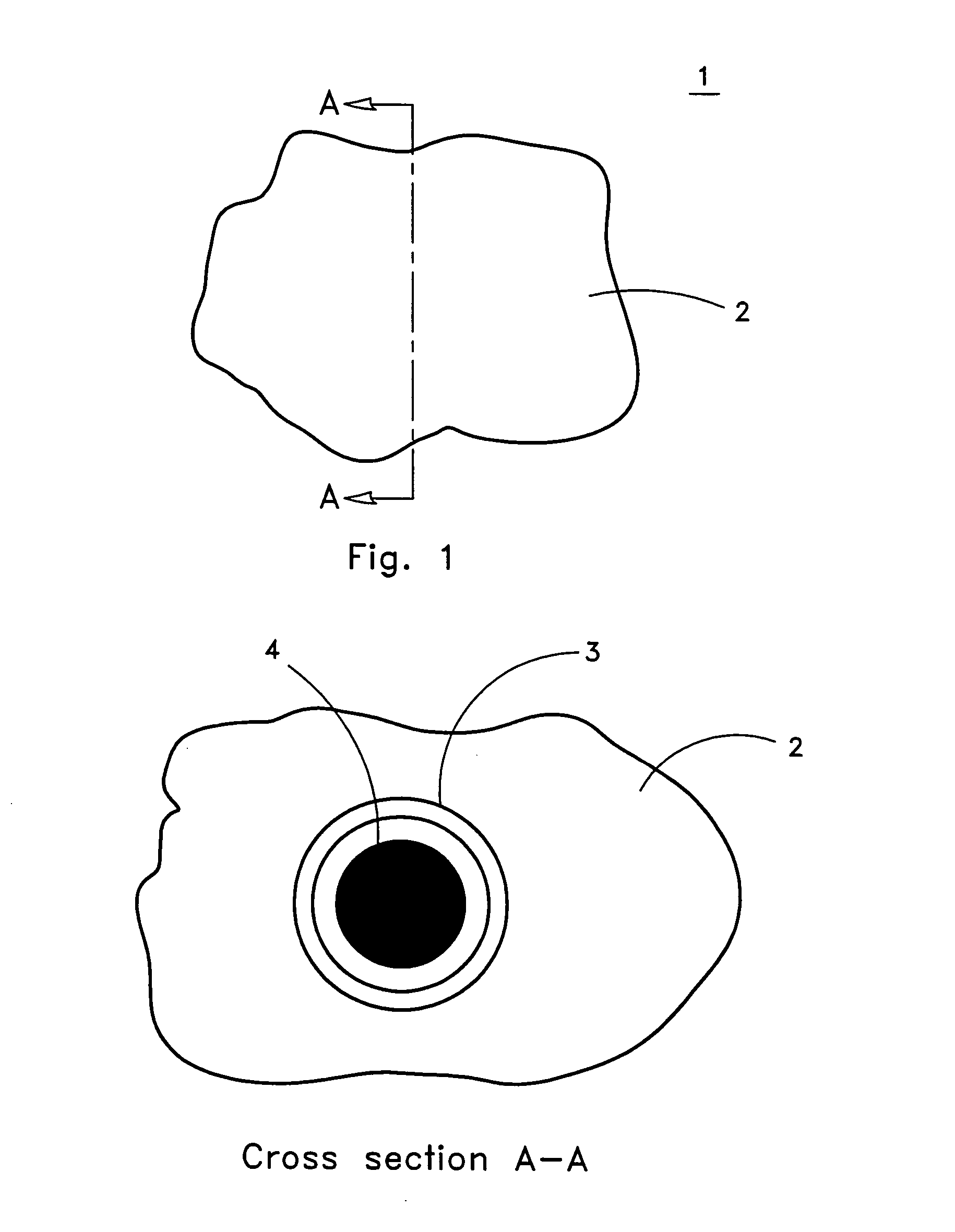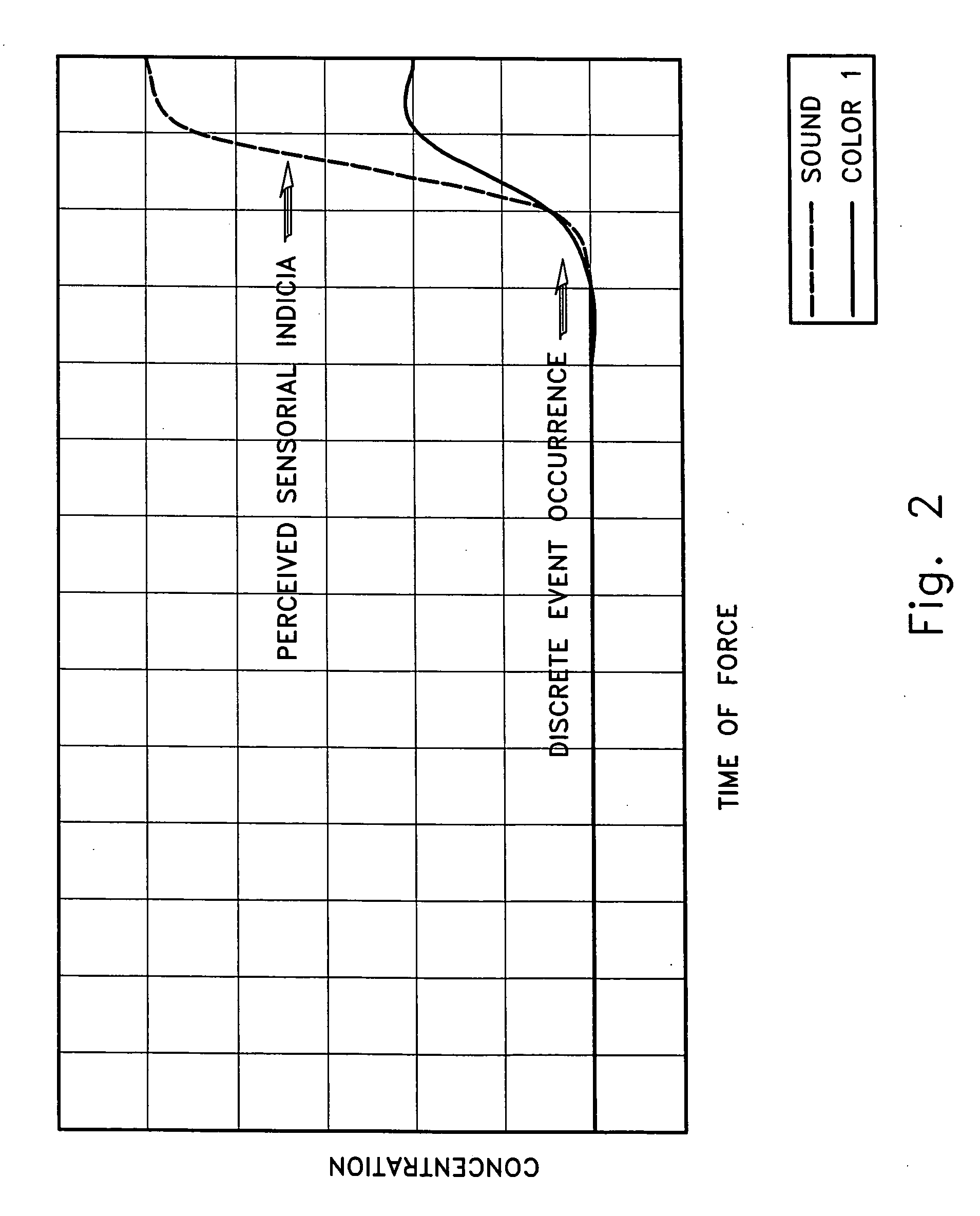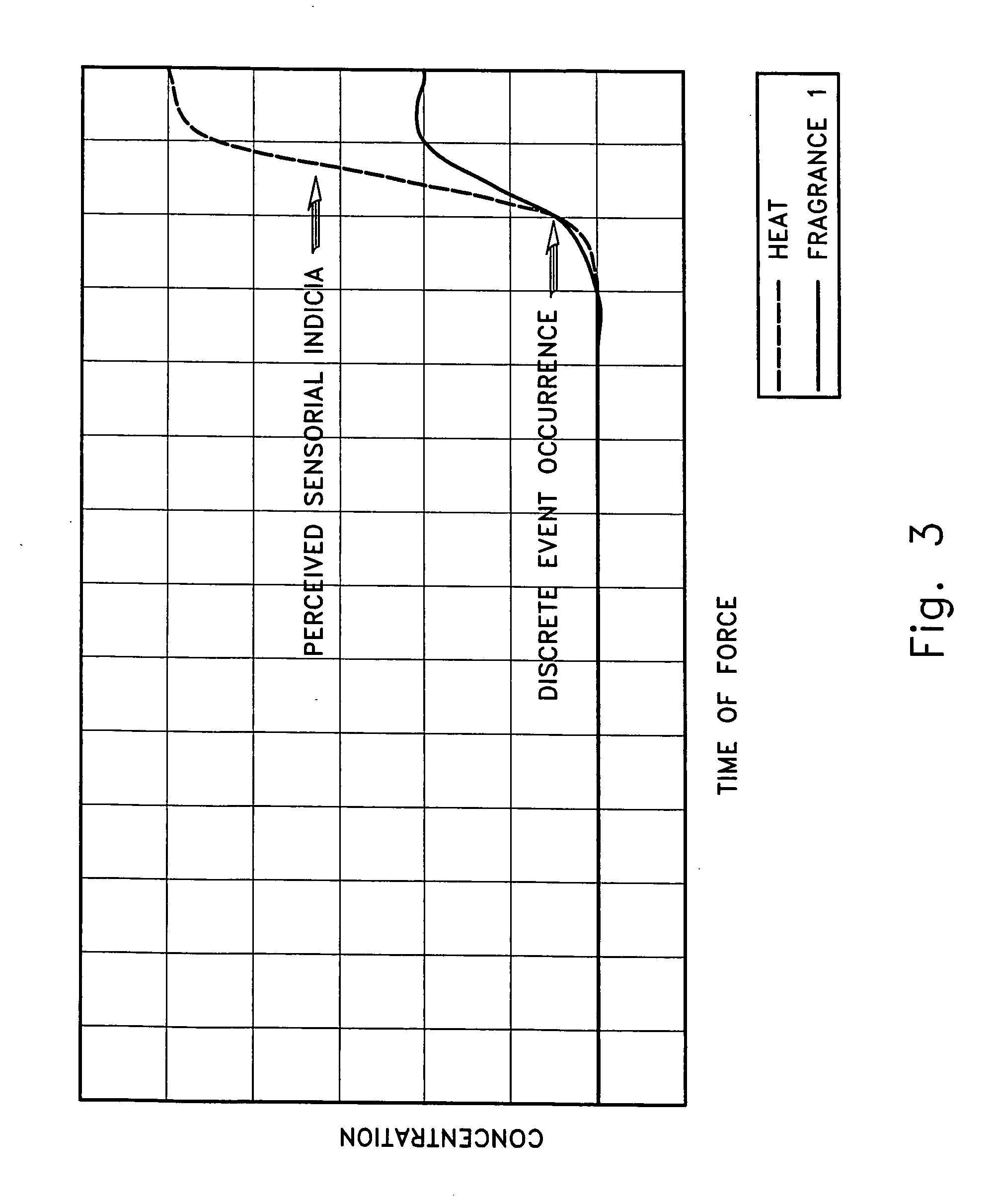Encapsulated material released to generate perceivable sensorial indicia of discrete event occurrence
a technology of sensorial indicia and encapsulated materials, which is applied in the direction of detergent compositions, detergent dyes, chemistry apparatus and processes, etc., can solve the problems of embarrassingly and unacceptably low compliance with hand washing guidelines, and none of these perceived sensorial attributes provide indicia, so as to increase the probability of attaining a discrete event and decrease the probability of a discrete event
- Summary
- Abstract
- Description
- Claims
- Application Information
AI Technical Summary
Benefits of technology
Problems solved by technology
Method used
Image
Examples
example 1
[0070] A composition to treat the skin in general and particularly the skin of the hands, can be prepared as follows:
[0071] A carrier can be produced by combination of 125 parts of water, 18 parts of sodium xylene sulfonate, 5 parts of sodium toluene sulfonate, 1 part of sodium dodecylbenzene sulfonate, and 10 parts of dodecyl phenol polyoxyethylene ethanol. The combination can be thickened by adding 6 parts of an aqueous solution of polyacrylamide (12% wt / wt) and brought to a neutral pH using a 50% solution of sodium hydroxide.
[0072] An capsule containing dye or other colored material can be produced by providing a seed particle of sugar sized to about 100 microns which can be coated with blue dye #7 to generate a blue dye #7 sugar particle having a diameter of about 150 microns. The blue dye #7 sugar particle can be encapsulated with polyvinyl acetate using the process of fluid bed coating or Wuerster process to a final nominal diameter of about 200 microns. Fluid bed coating of...
example 2
[0074] A carrier was prepared as described in Example 1 through the blending of surfactants and thickening with polyacrylamide.
[0075] Capsules containing oils having various fragrances were separately generated using the process of coacervation wherein dropelets of an oily substance are dispersed in water, coated with gelatin, and hardened with gluteraldehyde. Methyl salicylate or oil of wintergreen can be encapsulated in this manner. Six parts of the capsules produced as above-described containing methyl salicylate or oil of wintergreen-were added to the carrier to produce a hand washing agent.
[0076] Conditions of coacervation were then adjusted by trials to generate a capsule having a wall configured to rupture, fracture, or otherwise release oils to generate a perceivable sensorial indicia corresponding to effective hand washing with the above-described carrier (about ten seconds after commencement of hand washing) to an otherwise substantially odorless hand washing event.
example 3
[0077] A hand washing agent was prepared by adding the following ingredients:
[0078] A carrier was prepared using about 90 parts of water, about 8 parts of sodium lauryl sulfate, about 4 parts of isooctylphenoxypolyoxyethylene ethanol (12 moles EO) and about 1.5 parts of sodium carbonate. When blended, the solution was thickened by using 4 parts of a medium molecular weight methyl cellulose.
[0079] Neat sodium acetate particles sized to about 125 microns were coated with polyvinyl acetate using the fluid bed coating process to provide a capsule of sodium acetate having a nominal diameter of 170 microns. Seven parts of the sodium acetate capsules were combined with the carrier with no apparent visible change to the carrier.
[0080] An amount of the hand washing agent applied to the hands followed by hand washing ruptured or fractured capsules to release sodium acetate into the carrier. The acidic sodium acetate reacts with the alkaline sodium carbonate in the carrier to generate carbo...
PUM
| Property | Measurement | Unit |
|---|---|---|
| thickness | aaaaa | aaaaa |
| thickness | aaaaa | aaaaa |
| size | aaaaa | aaaaa |
Abstract
Description
Claims
Application Information
 Login to View More
Login to View More - R&D
- Intellectual Property
- Life Sciences
- Materials
- Tech Scout
- Unparalleled Data Quality
- Higher Quality Content
- 60% Fewer Hallucinations
Browse by: Latest US Patents, China's latest patents, Technical Efficacy Thesaurus, Application Domain, Technology Topic, Popular Technical Reports.
© 2025 PatSnap. All rights reserved.Legal|Privacy policy|Modern Slavery Act Transparency Statement|Sitemap|About US| Contact US: help@patsnap.com



